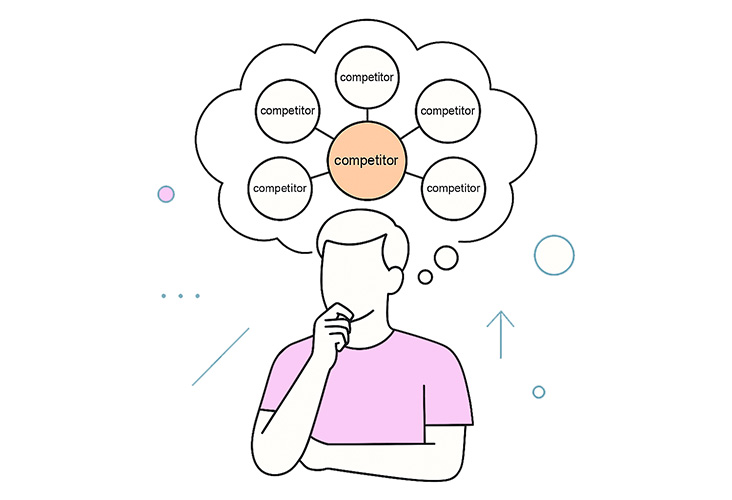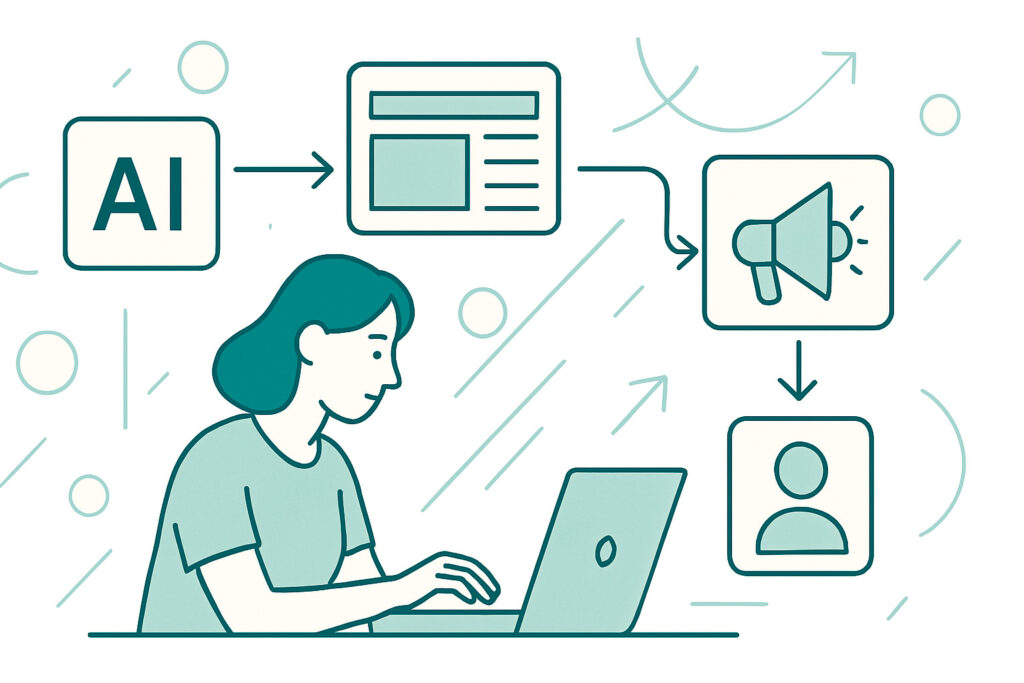You have an amazing SaaS idea. You’re convinced it solves a real problem. But here’s the thing — before you spend months building it, you need to know if your market actually agrees — and that starts with clear messaging and strong copywriting.
Most SaaS founders treat validation as a technical problem. They build prototypes, run surveys, and schedule customer interviews. But here’s what they’re missing: copywriting isn’t just about selling—it’s one of your most powerful validation tools, and you can use it before writing a single line of code.
When you understand copywriting fundamentals, you can craft messages that test assumptions, validate demand, and refine your product positioning before you build anything. You can discover whether people actually want what you’re planning to create—and how they want it positioned—all through strategic use of words.
Why Copywriting Matters More Than You Think
Your copy is often the first (and sometimes only) interaction potential customers have with your product. It’s your 24/7 salesperson, your product demo, and your market researcher all rolled into one.
But most SaaS founders approach copywriting backwards. They start with features and try to convince people why those features matter. Real copywriting starts with understanding your audience’s problems so deeply that your solution becomes obvious.
This shift in thinking turns copywriting from a cosmetic exercise into a strategic validation tool. Each headline becomes a hypothesis. Every email sequence is an experiment. And every landing page opens a conversation with your market.
The Foundation: Core Copywriting Frameworks for SaaS
Before you can validate anything, you need to understand the psychological frameworks that make copy work. These aren’t just writing techniques—they’re windows into how your customers think and make decisions. They’re built on decades of psychological research, from Daniel Kahneman and Amos Tversky’s Nobel Prize-winning prospect theory that revealed how “losses loom larger than gains” to cognitive science findings about how people process information and make choices under uncertainty.
AIDA: Your Validation Roadmap
AIDA stands for Attention, Interest, Desire, and Action. But for SaaS validation, think of it differently:
Attention tests whether your problem statement resonates. If people don’t stop scrolling when they see your headline, you haven’t identified a compelling enough pain point.
Interest validates whether your solution approach makes sense. This is where you explain how you solve the problem—and watch whether people engage or bounce.
Desire measures emotional connection. Are people excited about the outcome you promise? Do they want what you’re offering badly enough to take action?
Action reveals commitment level. A click is interest. A signup is intent. A payment is validation.
PAS: Problem-Agitate-Solve
This framework is particularly powerful for SaaS validation because it forces you to get specific about problems.
Problem: State the exact issue your target customer faces. Vague problems like “inefficient workflows” don’t validate anything. Specific problems like “spending 3 hours every Monday manually updating project statuses across 5 different tools” or “losing 20% of potential leads because it takes your sales team 4 days to follow up on demo requests” tell you whether you understand your market.
Agitate: Explore the consequences of the problem. What happens when this problem persists? What opportunities are lost? This section reveals whether the problem is painful enough to justify a solution.
Solve: Present your solution as the logical answer. If you’ve done the first two steps correctly, your product should feel inevitable.
The Rule of Three
Humans process information in groups of three more easily than any other number. For SaaS validation, this means testing three key benefits, three customer types, or three use cases rather than overwhelming people with everything your product can do.
When you focus on three core messages, you get cleaner data about what resonates. If your first benefit gets all the engagement while the other two fall flat, you’ve learned something valuable about your positioning.
Using Copy to Test Product-Market Fit
Traditional product-market fit advice tells you to build, measure, and learn. But that’s expensive and slow. Smart copywriting lets you test many of your assumptions before you write a single line of code.
Landing Page Experiments
Your landing page is your cheapest MVP. Before building complex features, write copy that describes those features and measure engagement.
Create different versions that emphasize different benefits. One version focuses on time savings. Another emphasizes cost reduction. A third highlights ease of use. The version that converts best tells you which value proposition matters most to your market.
But don’t just measure conversions. Track time on page, scroll depth, and click patterns. People who scroll to read your entire pricing section but don’t sign up are telling you something different than people who bounce after the headline.
Read more: How to Use Landing Page Validation to Test Your SaaS Idea
Email Sequences as Market Research
Email sequences are perfect for testing messaging because you can track engagement at a granular level. Which subject lines get opened? Which sections get clicked? What prompts replies?
Design your onboarding emails as experiments. Send different explanations of your core value proposition to different user segments. The explanations that generate questions, replies, or feature requests reveal which positioning resonates most.
Ad Copy as Demand Testing
Paid ads aren’t just customer acquisition—they’re market research. Write ad copy that tests different problem statements, solutions, and benefits. The ads with the highest click-through rates reveal which messages your market cares about most.
You can test demand for features that don’t exist yet. Write ad copy describing a potential feature and measure click-through rates. High engagement suggests genuine demand. Low engagement suggests you should focus elsewhere.
The Psychology Behind SaaS Buying Decisions
Understanding why people buy SaaS products changes how you write about them. B2B purchases aren’t just rational calculations—they’re emotional decisions justified with logic.
Fear vs. Aspiration
SaaS buyers are motivated by two primary emotions: fear of missing out on better results, and fear of making the wrong choice. Your copy needs to address both.
Fear-based copy focuses on problems and consequences. “While you’re manually tracking leads in spreadsheets, your competitors are closing deals faster with automated workflows.”
Aspiration-based copy focuses on outcomes and transformation. “Imagine closing 40% more deals without working longer hours.”
Test both approaches with your audience. Some markets respond better to fear, others to aspiration. Enterprise customers often respond to fear (risk mitigation). Startup customers often respond to aspiration (growth acceleration).
Social Proof and Authority
B2B buyers rarely make decisions in isolation. They need to justify their choices to colleagues, bosses, and budgets. This makes social proof crucial for validation.
But not all social proof is equal. Customer count matters less than customer quality. Revenue numbers matter less than specific outcomes. Generic testimonials matter less than detailed case studies.
Use your copy to test what kind of social proof resonates most. Do people engage more with customer logos, usage statistics, or outcome stories? The engagement patterns reveal what your market values most.
Advanced Validation Techniques
Once you understand the basics, you can use more sophisticated copywriting techniques to validate complex aspects of your SaaS business.
Positioning Tests
Craft copy that adapts your product’s positioning to fit each channel. On LinkedIn, present it as the ideal enterprise solution. On Twitter, highlight it as the startup-friendly alternative. And on your website, position it as the all-in-one, comprehensive platform.
Track which positioning generates the most qualified leads. This tells you not just who your customers are, but how they prefer to think about solutions like yours.
Feature Prioritization Through Copy
Before building new features, write copy describing those features and test engagement. Create feature announcement emails, landing page sections, or ad copy for capabilities that don’t exist yet.
The features that generate the most interest, questions, and pre-orders are the ones worth building first. The features that generate silence should stay in your backlog.
Pricing Psychology
Your pricing page copy reveals how customers value your product. Test different ways of describing your pricing tiers. Focus on features vs. outcomes. Emphasize savings vs. ROI. Compare to alternatives vs. standalone value.
The copy that drives the most upgrades to higher tiers tells you what your market values most. If everyone chooses your cheapest plan, your value messaging might not be strong enough. If everyone chooses your most expensive plan, you might be underpricing.
Common Copywriting Mistakes That Kill Validation
Even founders who understand copywriting principles often make mistakes that corrupt their validation data.
Feature Lists Instead of Benefits
Features tell people what your product does. Benefits tell people what your product does for them. But outcomes tell people what their life looks like after using your product.
“Our CRM includes email automation” is a feature. “Nurture leads automatically” is a benefit. “Close 30% more deals without working weekends” is an outcome.
Test all three levels and see which drives the most engagement. The level that resonates most reveals how your market thinks about solutions.
Generic Instead of Specific
Generic copy generates generic responses. “Streamline your workflow” could mean anything to anyone. “Reduce time spent on status updates from 2 hours to 10 minutes every Monday” is specific enough to validate whether you understand your customer’s actual experience.
Specific copy also attracts specific customers. Generic messaging attracts everyone, which makes it hard to identify your ideal customer profile.
Solution Before Problem
Many SaaS founders start with their solution and work backwards to problems. This approach makes validation impossible because you’re not testing whether the problem exists—you’re testing whether people like your solution to a problem they might not have.
Start your copy with the problem. Get specific about the current state. Make people nod their heads thinking “yes, that’s exactly what I experience.” Only then introduce your solution.
Measuring Copy Performance for Validation
The metrics you track determine the insights you gain. Traditional marketing metrics like click-through rates and conversion rates tell you whether your copy works, but they don’t tell you why.
Engagement Depth
Track how deeply people engage with your copy. Do they read your entire landing page or bounce after the headline? Do they click through multiple pages or stay on the first one?
Deep engagement suggests strong problem-solution fit. Shallow engagement suggests weak resonance.
Question Quality
The questions people ask after reading your copy reveal how they think. Pricing questions signal buying intent. Feature-related questions show they’re evaluating options. And questions about implementation suggest they may be concerned about complexity.
Track the types of questions your copy generates. The pattern reveals where your positioning needs clarification.
Conversion Path Analysis
Don’t just measure final conversions. Track the path people take through your copy. Which sections do they read first? Where do they spend the most time? What causes them to take action?
This behavioral data reveals which messages drive decisions and which messages create friction.
Building Your Copywriting Validation System
Systematic validation requires systematic copy testing. Here’s how to build a process that generates reliable insights.
Create Message Hierarchies
Organize your copy testing around message hierarchies. Start with your core value proposition. Once that’s validated, test secondary benefits. Once those are validated, test specific features.
This approach prevents you from optimizing details while your fundamental positioning is wrong.
Document Everything
Keep detailed records of every copy test — what you tested, the results, what you learned, and what you plan to test next.
This documentation becomes invaluable as you scale. Patterns emerge that wouldn’t be visible from individual tests.
Connect Copy to Product Decisions
The ultimate goal of copywriting validation is better product decisions. Create feedback loops between your copy performance and your product roadmap.
If copy about Feature A generates twice as much engagement as copy about Feature B, that should influence your development priorities.
Advanced Frameworks for SaaS Copy
Once you master the basics, these advanced frameworks can unlock deeper validation insights.
Jobs-to-be-Done Copywriting
Write copy that speaks to the “job” your customer is trying to get done, not just the problem they’re trying to solve. People don’t buy project management software—they buy the ability to deliver projects on time without stress.
This framework helps you identify competition you might not have considered. Your real competition isn’t other SaaS tools—it’s whatever solution your customers currently use to get their job done.
Objection-Based Copy
Identify every possible objection to your solution and address them directly in your copy. “Too expensive,” “too complex,” “we’ve tried similar tools before”—address each one head-on.
The objections that disappear from customer conversations after you address them in copy were real barriers. The objections that persist despite being addressed might not be the real concern.
Story-Driven Validation
Humans are wired to understand information through stories. Instead of listing features and benefits, tell stories about customers who transformed their businesses using your product.
The stories that generate the most engagement reveal which transformation narratives resonate most with your market.
Scaling Your Copy-Based Validation
As your SaaS grows, your copywriting validation needs to evolve. What works at 100 users might not work at 10,000 users.
Segment-Specific Copy
Different customer segments respond to different messages. Enterprise customers care about security and compliance. Startups care about speed and cost. SMBs care about ease of use and support.
Create separate copy tracks for each segment and measure performance independently. This reveals which segments are most receptive to your positioning.
International Validation
If you plan to expand internationally, test your copy across different cultures and languages. Direct translations often fail because they don’t account for cultural differences in how people think about problems and solutions.
Channel-Specific Optimization
Your copy needs to work across multiple channels—your website, emails, ads, social media, sales calls. Each channel requires different approaches while maintaining consistent core messaging.
Test how your core value proposition performs across channels. Inconsistent performance might reveal channel-specific concerns or opportunities.
Key Takeaways
- Copywriting is validation, not just marketing — Every piece of copy you write is an opportunity to test assumptions about your market, problems, and solutions
- Start with frameworks, not features — AIDA, PAS, and the Rule of Three give you structured ways to test whether your messaging resonates with your target market
- Specific beats generic every time — Specific problems, specific solutions, and specific outcomes generate specific responses that you can measure and learn from
- Test positioning before building — Use landing pages, email sequences, and ad copy to validate demand for features before you invest time building them
- Track engagement depth, not just conversions — Time on page, scroll depth, and question quality reveal more about product-market fit than conversion rates alone
- Address the psychology, not just the logic — B2B buyers make emotional decisions justified with rational reasons, so test both fear-based and aspiration-based messaging
- Create systematic testing processes — Document everything, build message hierarchies, and connect copy performance directly to product development decisions
- Scale your validation with your growth — What works for early customers might not work for later segments, so continuously evolve your copy testing as you grow




